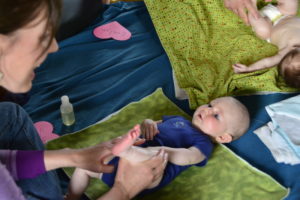Interviewed and written by Lois Pierce
Natural History is an important part of ANY science program and it’s been brought to the Southern Oregon area for 7 years by a very POPULAR company that caters to ALL ages at ALL locations.
BUGS-R-US Educational Services provides hands-on fun and education to 5 counties in 2 states. Its owner, John Jackson, has done over 3000 programs in the past 7 years to over 160,000 visitors and is still going strong.
John contributes the success of BUGS-R-US to that simple fact that ”People like to be entertained, educated and  grossed out every chance they can get.” And that’s what he does with 15 different topics ranging from the most popular “BUGS and BUGS AS FOOD” , “WORMS and COMPOSTING” to “OWLS and OWL PELLETS” and the new “NATURAL HISTORY of the OREGON TRAIL.” “Every program we teach is just a big show-and-tell….the audience gets to touch EVERYTHING and that’s what makes it stick in their minds.”
grossed out every chance they can get.” And that’s what he does with 15 different topics ranging from the most popular “BUGS and BUGS AS FOOD” , “WORMS and COMPOSTING” to “OWLS and OWL PELLETS” and the new “NATURAL HISTORY of the OREGON TRAIL.” “Every program we teach is just a big show-and-tell….the audience gets to touch EVERYTHING and that’s what makes it stick in their minds.”
BUGS-R-US Educational Services has worked for retirement communities, day-care centers, schools, churches, birthday parties, fund-raisers, Parks and Rec., Scouts, Homeschools, Garden Clubs and the list goes on. They have turned ALL of the 15 topics into Birthday themes. Your child’s Birthday Party can feature unique, unusual entertainment that is educational as well!
John updates the 15 topics on a regular basis and tries to keep them FRESH for new audiences. “We built the “NATURAL HISTORY of the OREGON TRAIL” program for 4th graders but quickly found out that it appeals to older folks just because of the history factor.” And that’s how his audience base continues to grow.
John and his son, Will, usually work 7 days a week and have to buy the new year calendar VERY early. “Some of our clients like to book 9-12 months out so that means I can look at the schedule a year out and know I’ll still have a job”, John jokes.
BUGS-R-US Educational Services website… www.bugsrus.org … has details about all 15 of their programs along with photos and videos.
“It amazes me that I get to educate and have fun with my students and it’s not really work”, John says. “It’s just me having fun with friends.”
BUGS-R-US Educational Services can be reached at (541) 772-3281 or through their website at www.bugsrus.org
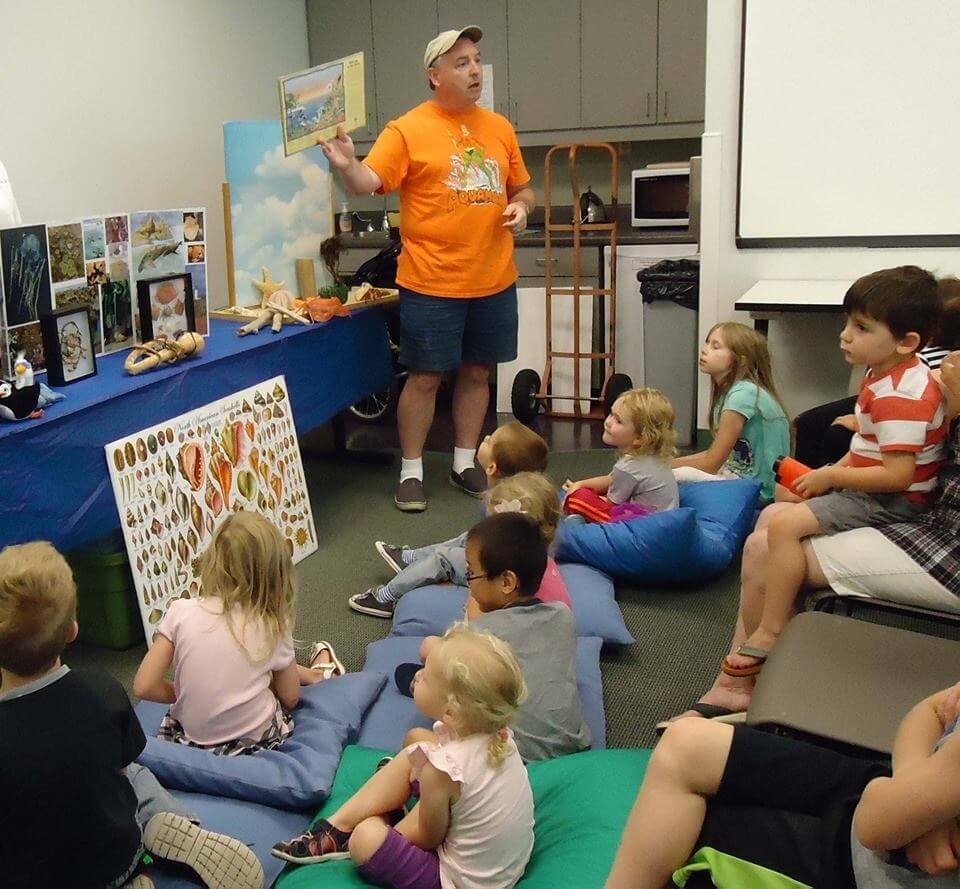



 engaged in the process of selection, planning and preparation of their meals. You can make meal preparation fun and creative that kids will look forward to. Make scenes with your food, pancake or sandwich faces, craft animals from celery sticks, peanut butter and apples or raisins. We are taught not to play with our food but a little fun time can be good.
engaged in the process of selection, planning and preparation of their meals. You can make meal preparation fun and creative that kids will look forward to. Make scenes with your food, pancake or sandwich faces, craft animals from celery sticks, peanut butter and apples or raisins. We are taught not to play with our food but a little fun time can be good.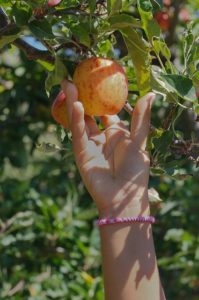 garden. How fun it can be to grow, care for and pick fresh fruits and vegetables together.
garden. How fun it can be to grow, care for and pick fresh fruits and vegetables together.


 Listen to your child. Talk to your child.
Listen to your child. Talk to your child.

 expectations will be. You should always know the people your child will be spending time. It does not matter if they are a child or an adult. Ask questions of those adults that are in charge. If it is an organized activity, ask about what kinds of supervision will be given to the participants.
expectations will be. You should always know the people your child will be spending time. It does not matter if they are a child or an adult. Ask questions of those adults that are in charge. If it is an organized activity, ask about what kinds of supervision will be given to the participants. know that you are involved in your child’s life and you are also letting them know that you will be watching for signs that indicate when something is not right. You are reducing the risk for your child to be abused!
know that you are involved in your child’s life and you are also letting them know that you will be watching for signs that indicate when something is not right. You are reducing the risk for your child to be abused!
 Remember your children are watching you and will take their cues from you. If you are enjoying the holidays, the frenzy, the time with family then chances are your children will as well. Our children mirror our behavior in a lot of ways. If you are unhappy and stressed out, they likely will be as well.
Remember your children are watching you and will take their cues from you. If you are enjoying the holidays, the frenzy, the time with family then chances are your children will as well. Our children mirror our behavior in a lot of ways. If you are unhappy and stressed out, they likely will be as well.
 emotional well-being.
emotional well-being.
 Twitter, Tumblr, Snapchat, and Kik Messenger. Common examples of cyberbullying include mean and threatening text messages, rumors sent by email or posted on social networking sites, and embarrassing pictures, videos, websites, or fake profiles.
Twitter, Tumblr, Snapchat, and Kik Messenger. Common examples of cyberbullying include mean and threatening text messages, rumors sent by email or posted on social networking sites, and embarrassing pictures, videos, websites, or fake profiles.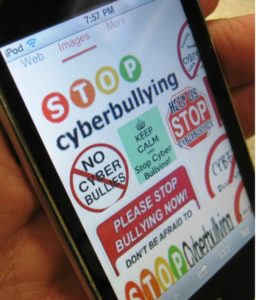 So what should you do as a parent to help reduce the risks of cyberbullying? The most important thing to do is talk with your kids about cyberbullying and other online issues regularly. You should also regularly look for opportunities to model and teach empathy. When we help our kids put themselves in another person’s shoes, they learn to be more sensitive to what that person is experiencing and are less likely to tease or bully them. By explicitly teaching our kids to be more conscious of other people’s feelings, we can create a more accepting and respectful community. Learn more at
So what should you do as a parent to help reduce the risks of cyberbullying? The most important thing to do is talk with your kids about cyberbullying and other online issues regularly. You should also regularly look for opportunities to model and teach empathy. When we help our kids put themselves in another person’s shoes, they learn to be more sensitive to what that person is experiencing and are less likely to tease or bully them. By explicitly teaching our kids to be more conscious of other people’s feelings, we can create a more accepting and respectful community. Learn more at 

 ingredients at the grocery store as well as in the kitchen. This can be helpful for children with persnickety eating habits to feel a sense of control and value.
ingredients at the grocery store as well as in the kitchen. This can be helpful for children with persnickety eating habits to feel a sense of control and value.
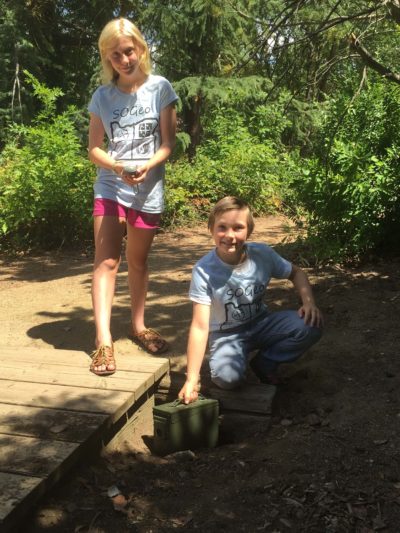 search
search 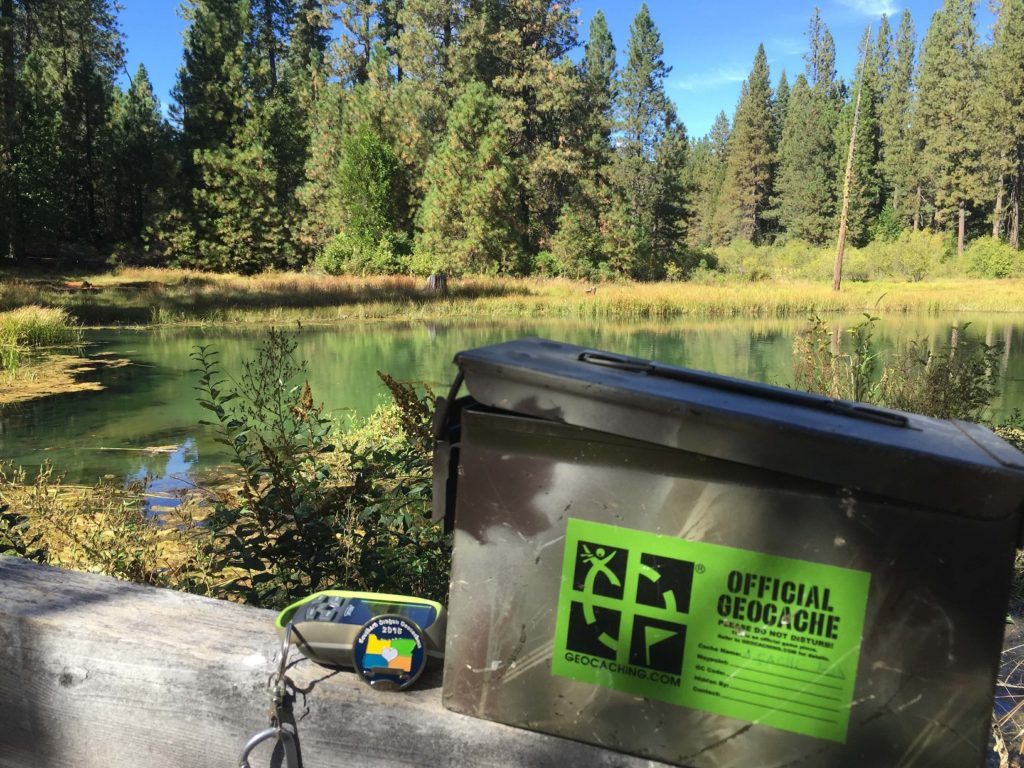 your home address and let the adventure begin! Each cache will have a description of what you are looking for and sometimes a hint. You can also read the past logs of other folks who have found that cache. Once you discover the physical cache you will find a log sheet to write your geocaching name on. Then you can log the find online via smart phone or computer and share your experience with other cachers. Often, inside the cache you will find small tradeable items so make sure you have a trinket if you want to swap something! This is a favorite part of the game for young cachers. See Geocaching.com for more details on tradable items.
your home address and let the adventure begin! Each cache will have a description of what you are looking for and sometimes a hint. You can also read the past logs of other folks who have found that cache. Once you discover the physical cache you will find a log sheet to write your geocaching name on. Then you can log the find online via smart phone or computer and share your experience with other cachers. Often, inside the cache you will find small tradeable items so make sure you have a trinket if you want to swap something! This is a favorite part of the game for young cachers. See Geocaching.com for more details on tradable items.

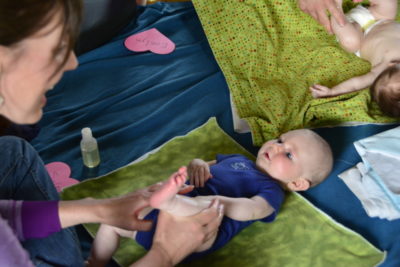 advantages of infant massage in
advantages of infant massage in 
